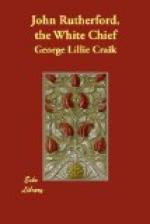Among themselves, the New Zealanders appear to have a great variety of other gods, besides the one whom they call emphatically the atua. Crozet speaks of some feeble ideas which they have of subordinate divinities, to whom, he says, they are wont to pray for victory over their enemies. But Savage gives us a most particular account of their daily adoration of the sun, moon, and stars. Of the heavenly host, the moon, he says, is their favourite; though why he should think so, it is not easy to understand, seeing that, when addressing this luminary, they employ, he tells us, a mournful song, and seem as full of apprehension as of devotion; whereas “when paying their adoration to the rising sun, the arms are spread and the head bowed, with the appearance of much joy in their countenances, accompanied with a degree of elegant and reverential solemnity, and the song used upon the occasion is cheerful.” It is strange that none of their other visitors have remarked the existence of this species of idolatry among these savages.
Yet two New Zealanders, who are now in this country, were in the habit of commencing the exhibition of their national customs with the ceremonies practised in their morning devotion to the sun.
The vocal part of the rite, according to the account we have received, consisted in a low monotonous chant; the manual, in keeping a ball about the size of an orange constantly whirling in a vertical circle. The whole was performed in a kneeling posture. Like most other rude nations, the New Zealanders have certain fancies with regard to several of the more remarkable constellations; and are not without some conception that the issues of human affairs are occasionally influenced, or at least indicated, by the movements of the stars. The Pleiades, for instance, they believe to be seven of their departed countrymen, fixed in the firmament; one eye of each of them appearing in the shape of a star, being the only part that is visible. But it is a common superstition among them, as we have already noticed, that the left eyes of their chiefs, after death, become stars.
This notion is far from being destitute of poetical beauty; and perhaps, indeed, exhibits the common mythological doctrine of the glittering host of heaven being merely an assemblage of the departed heroes of earth, in as ingenious a version as it ever has received. It would be easy to collect many proofs of the extensive diffusion of this ancient faith, traces of which are to be found in the primitive astronomy of every people. The classical reader will at once recollect, among many others of a similar kind, the stories of Castor and Pollux, and of Berenice’s tresses, the latter of which has been so elegantly imitated by Pope, in telling us of the fate of the vanished lock of Belinda:—
“But trust the muse—she
saw it upward rise,
Though marked by none but quick poetic
eyes;
(So Home’s great founder to the
heavens withdrew,
To Proculus alone confessed to view);
A sudden star it shot through liquid air,
And drew behind a radiant trail of hair.”




